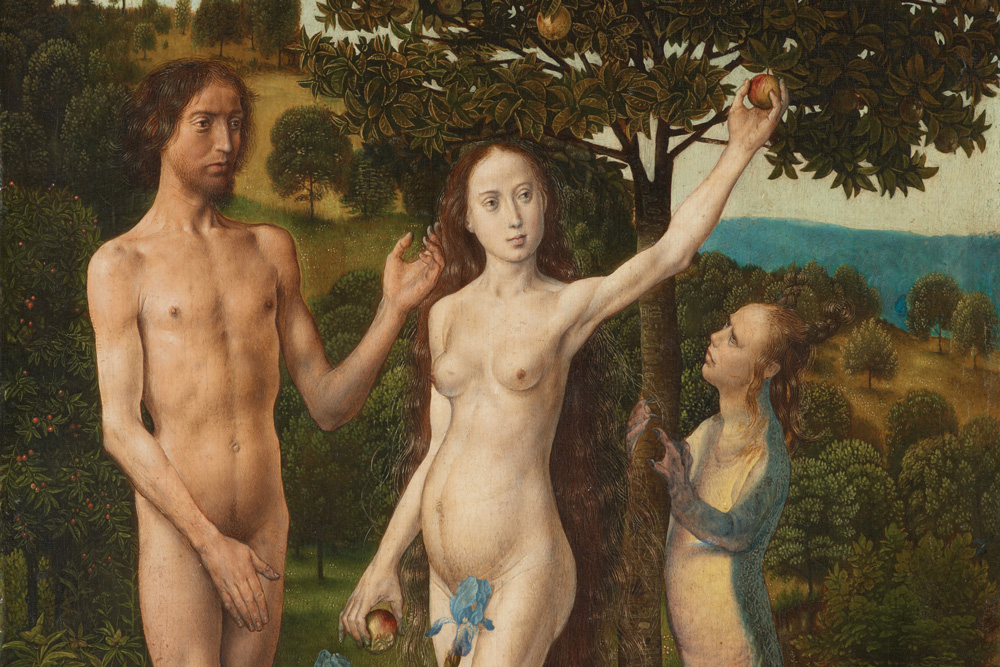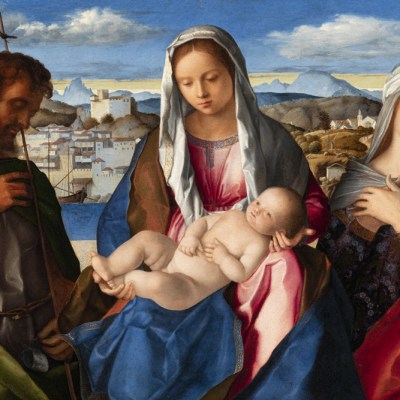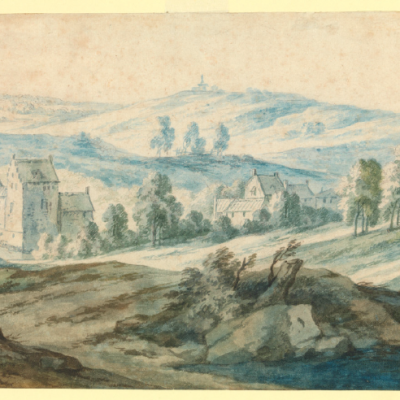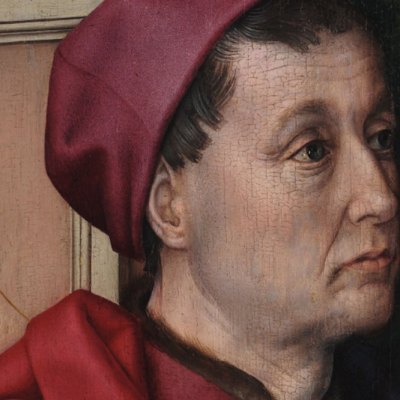From the June 2023 issue of Apollo. Preview and subscribe here.
Clutching the Tree of Knowledge with her webbed claws, the serpent looks up at Eve with baffled sympathy. What an exquisite beauty, the monster who introduced sin into the world. Her reptilian belly brushes against the trunk of the tree, her back and tail are a luminous turquoise, her dragon’s feet a rich crimson, as if she’s just stepped out of a pool of blood. Yet she has the face of an adolescent girl, her brow wrinkled with concern, or perhaps a hint of disdain, conveying a complex set of emotions at odds with the blank, generic visages of Adam and Eve. She appears sentient, plagued with curiosity, like a child wondering how her parents could be so stupid. In The Fall of Man (one panel of the Vienna Diptych, c. 1477–79), Hugo van der Goes asks the viewer to take the perspective of the serpent – not as an agent of mindless malevolence, but as an observer of human frailty.
The Fall of Man (from the Vienna Dipytch) (c. 1477–79), Hugo van der Goes. Photo: © KHM-Museumsverband
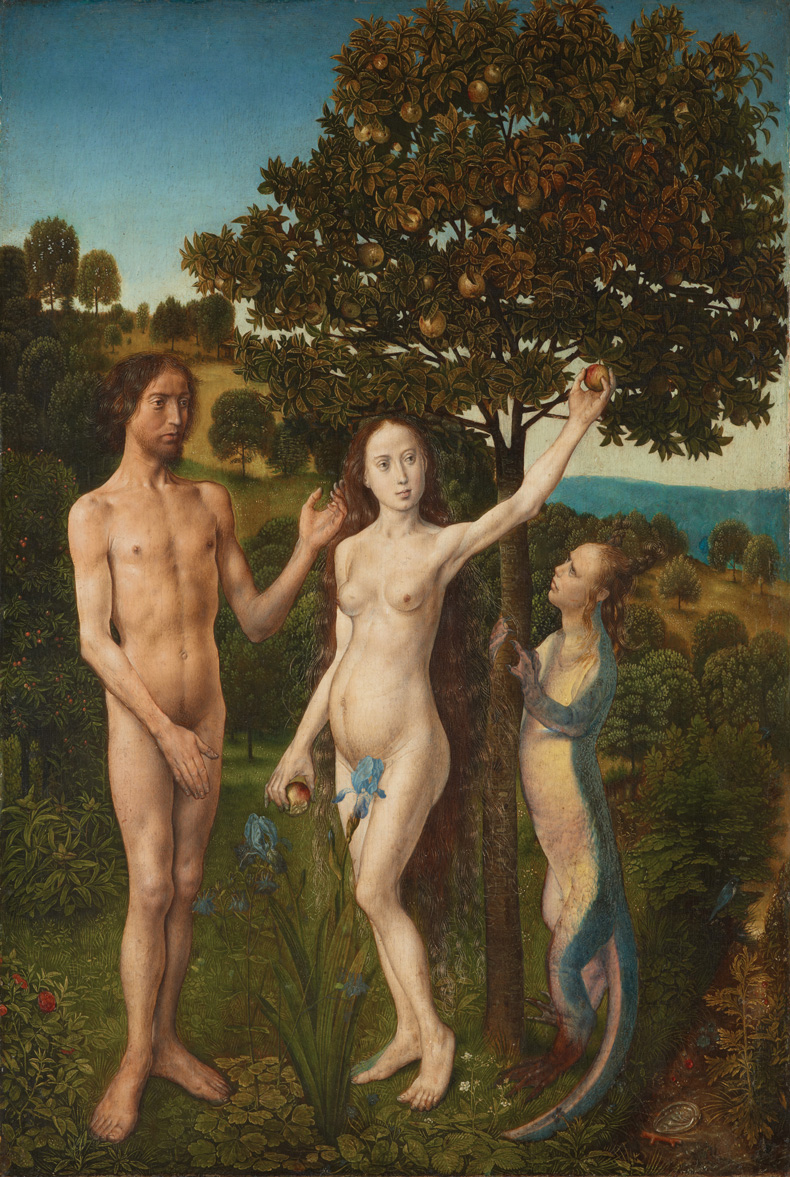
The Gemäldegalerie’s own Monforte Altarpiece (c. 1470/75), the largest work in ‘Hugo van der Goes: Between Pain and Bliss’, offers an instructive contrast to the Lamentation of Christ (c. 1460/70) by Rogier van der Weyden (or follower), which the curators of the exhibition believe a young Van der Goes might have had a hand in painting. With its frieze-like structure and evenly paced composition, the Lamentation is clearly legible: the painting tells a conventional tale with precision, without surprises. The Monforte Altarpiece, by contrast, opens up like a room we can enter, and thrums with vivid details, as if Van der Goes wanted to weave tactile sensuality into his biblical tale. The columbine and Christmas rose in the foreground are acts of observational detail to rival Albrecht Dürer, transcending their symbolic roles; likewise the cluster of irises on the left, bursting from behind the wall as if to advertise God’s second book, nature. The hands, corporeal and detailed, animate the pictorial space like viceroys of the divine, offering prayer, gifts, grace: they create a shared world among everyone, prior to language or power. (A hand is also, of course, the painter’s means of apprehending the world.) At the geometrical apex of the composition, a small black-and-white squirrel sits on a beam, looking at a wall, wondering what to do next. In the world of Van der Goes even rodents face existential dilemmas.
The painter depicts two stories: the one we already know and the one he wants to tell. In Jacob and Rachel (c. 1475), a large work on paper, the key drama unfolds to the centre-right of the composition (Van der Goes had placed them in a conventionally central position but the right side of the work was cut away at some point). Jacob and Rachel are like actors on the stage, immersed in their roles, oblivious to their audience. On the far left shepherds observe the drama, grinning like delighted voyeurs, while behind them a couple engage in some erotic horseplay, an echo of the more decorous courtship at the core of the picture. Are we implicated? Is Van der Goes challenging us to pay attention to the main story, or suggesting there’s more fun to be had on the periphery? The act of looking has a fierce and mysterious power for the artist: what we see, or choose to pay attention to, is at the heart of our moral and aesthetic choices.
In the Vienna Diptych, the counterpart to The Fall of Man, with its beautiful serpent, is the Lamentation. To the right of Christ, Nicodemus looks down at a mingling of the divine and the mundane: the crown of thorns has fallen over his hat. An inseparable blend of disgust and desire on his face, he is paralysed by the paradox at his feet. Nicodemus and the serpent are imbued with a complex psychology and a relatable humanity. They are proxies for the viewer, perhaps even the artist. By using their sense of sight as a form of thought or moral reckoning, or straight up pleasure, these characters ask us to stand outside the conventional narrative and look closely. Between our fall and our redemption, a story that applies to everyone at all times, how do we understand the world? The feeling of being alive, its gift and its perils, is conveyed through visual sensation: a sinuous stem of a weed, the droop of its flower, the burst of blue from a hat, the sudden awareness of our choices, the strange and ineluctable unknowability of another consciousness.
The Lamentation (from the Vienna Diptych) (c. 1477/79). Hugo van der Goes. Kunsthistorisches Museum, Vienna. Photo: © KHM-Museumsverband
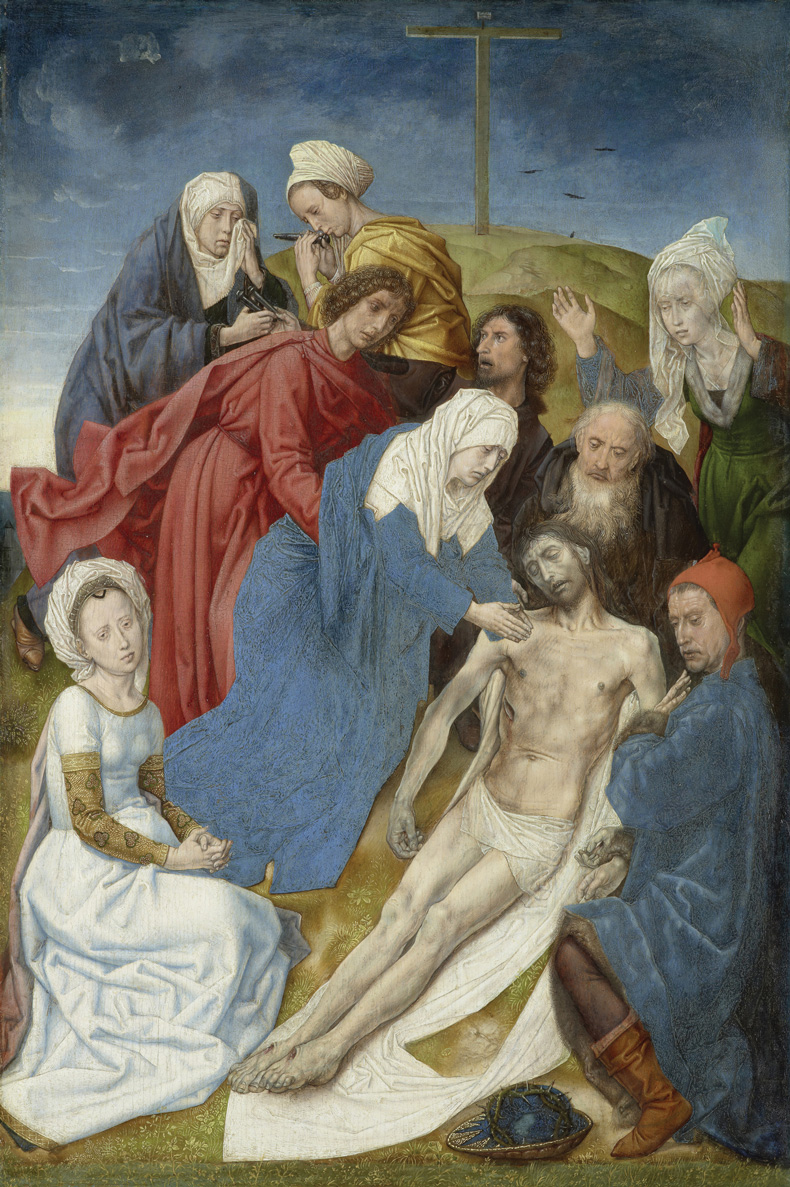
When Adam and Eve sampled the apple, ‘the eyes of both were opened’, it says in Genesis, and Van der Goes seems to feel this connection between looking and knowledge, vision and sin. His Nativity (c. 1480) unfolds with cinematic abundance, emphasised by two prophets (probably Isaiah and Daniel) pulling back green curtains to reveal the scene. If the painting is organised around the central drama that everyone rushes in to witness – the infant Christ, a spindly baby in a cradle – it is scarcely worth a second glance. The weeds in the foreground steal the show, not to mention the lustrous details on the prophets’ cloaks. Even the curtain has a beautiful, diaphanous quality, becoming paler where the background light shines through. Van der Goes observes with rapt attention all the ephemera of life, the shadows and accidents. While his Saint Luke Drawing the Virgin (c. 1475/80) looks with generous eyes at an absent Mary (a missing panel), the viewer is mesmerised by the vividly painted sheen of black leather on his shoe (see March 2023 issue of Apollo). Michelangelo thought that Netherlandish artists neglected ‘reason and art’ in favour of verisimilitude, an idea that has become a persistent cliché about their work. Yet we know that Van der Goes was an innovator whose dramatic compositions and pictorial inventions persist in countless copies and imitations. He simply takes it further: to see is to know. It is in the details, the periphery, where he shows his brilliance, his love for the world.
‘Hugo van der Goes: Between Pain and Bliss’ is at the Gemäldegalerie, Berlin, until 16 July.
From the June 2023 issue of Apollo. Preview and subscribe here.
